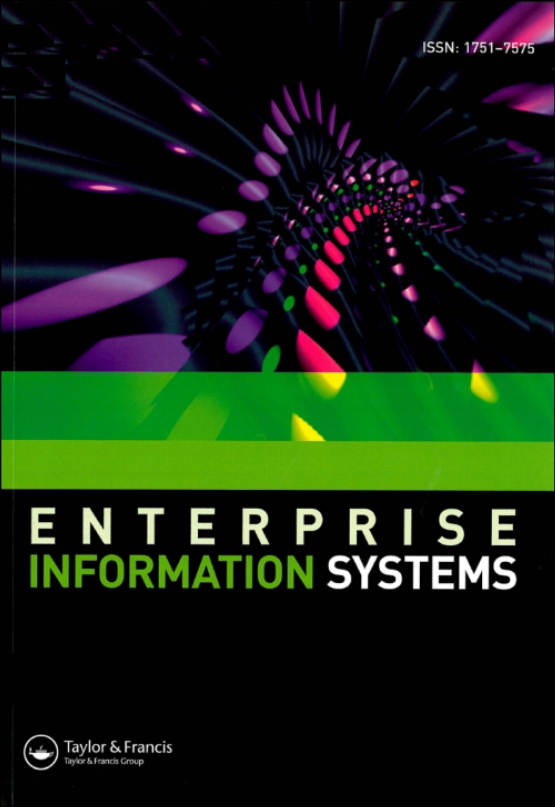Submit a Manuscript to the Journal
Enterprise Information Systems
For a Special Issue on
Multimodal AI and Intelligent Hyperautomation: Methodologies, Interactivity and Applications
Manuscript deadline

Special Issue Editor(s)
Mu-Yen Chen (Corresponding Guest Editor),
National Cheng Kung University, Taiwan
mychen119@gs.ncku.edu.tw
Rafał Cupek,
Silesian University of Technology, Poland
rcupek@polsl.pl
Patrick C. K. Hung,
Ontario Tech University, Canada
patrick.hung@ontariotechu.ca
Multimodal AI and Intelligent Hyperautomation: Methodologies, Interactivity and Applications
The application of artificial intelligence (AI) in intelligent automation has shown great promise in enhancing operational efficiency and reducing human intervention. However, several key challenges hinder its widespread and effective deployment. First, many AI models require significant manual effort for data labeling, model training, and system integration, which not only increases cost and complexity but also introduces inconsistencies and potential biases. Second, traditional AI models often operate as "black boxes," lacking transparency in how decisions are made—this undermines user trust and hinders accountability in safety-critical environments. Third, many AI solutions remain domain-specific, with limited flexibility or scalability across different application scenarios. These systems are often difficult to adapt or retrain in dynamic environments, making continuous improvement and real-time responsiveness challenging. To realize truly intelligent and adaptable automation, AI systems must evolve toward greater explainability, interoperability, and self-improving capabilities.
To overcome the challenges faced in intelligent automation, Intelligent Hyperautomation has emerged as a pivotal framework for next-generation digital transformation. This paradigm integrates advanced AI with process automation technologies to execute complex, repetitive, and knowledge-intensive tasks with minimal human intervention. However, the true transformative power of hyperautomation is unlocked when it is coupled with Multimodal AI. Multimodal AI is capable of simultaneously processing and fusing data from various sources—such as speech, images, video, text, and sensor signals—allowing intelligent systems to perceive, interpret, and act upon rich, context-aware information. When embedded within hyperautomation systems, Multimodal AI provides the cognitive layer that enables systems to make decisions based on a comprehensive understanding of both human behavior and environmental conditions.
The synergy between Multimodal AI and Intelligent Hyperautomation enables adaptive, resilient, and human-centric automation pipelines. For example, in a smart factory setting, temperature and vibration sensor data, machine vision input, and operator voice instructions can be integrated and interpreted together. This allows the system to detect potential faults early, generate context-specific maintenance strategies, and adjust production workflows dynamically—capabilities that would not be achievable through unimodal or rule-based automation systems alone. Furthermore, Multimodal AI facilitates continuous learning and feedback integration, allowing hyperautomation systems to refine their models and actions over time. This joint capability makes it possible to build systems that are not only automated, but also situationally aware, responsive to change, and capable of intelligent adaptation across diverse operational scenarios.
In the context of Intelligent Hyperautomation, multimodal models allow systems to interact with users more naturally, learn from feedback loops, and continuously evolve based on incoming multimodal inputs. This enhances the automation pipeline from passive execution to active, self-improving intelligence, applicable to domains such as smart cities, healthcare, education, manufacturing, finance, and service robotics. This special issue seeks to bring together innovative research that bridges Multimodal AI and Intelligent Hyperautomation, focusing on novel methodologies, interaction mechanisms, and cross-domain applications that leverage both areas to drive scalable, efficient, and human-centered automation. Topics appropriate for this special issue include, but are not necessarily limited to:
Topics
Methodologies and Techniques:
- Adaptive machine learning and soft computing algorithms for multimodal hyperautomation
- Multimodal fusion techniques for behavior recognition and decision-making
- Cross-modal learning architectures for automation pipelines
- Explainability and transparency in multimodal intelligent systems
- Knowledge representation and reasoning for hyperautomation tasks
- Federated learning, meta-learning, and continual learning for automated systems
- Optimization algorithms and tuning strategies for multimodal AI in hyperautomation
- Interactivity and Human-Centered Design
- Human-AI interfaces in multimodal hyperautomation environments
- Emotion and behavior sensing for adaptive automation
- Social signal processing and affective computing in automation workflows
- User trust, security, and privacy in multimodal intelligent systems
Applications:
- Multimodal AI in smart manufacturing and predictive maintenance
- Intelligent e-learning and education support systems
- Multimodal robotic process automation
- AI-driven smart cities, healthcare, and urban infrastructure
- Multimodal AI in financial forecasting and risk management
- Digital twins powered by multimodal inputs for hyperautomation
Submission Instructions
Important dates
- Paper submission deadline: Dec 27, 2025
- First-round acceptance notification: Jan 31, 2026
- Revision submission: Feb 28, 2026
- Notification of final decision: Mar 31, 2026
- Publication date: Decided by EiC
Submission
Submissions to the special issue will be screened by the Editor-in-Chief and then the Special Issue Editors to ensure that they conform to the quality standards and scope of Enterprise Information Systems. Papers that do not pass this initial screening will be immediately returned to the authors. Reviewers will apply those standards in forming recommendations for acceptance, revision, or rejection. A maximum of two revisions will be invited.
Papers should be formatted with Enterprise Information Systems style (https://www.tandfonline.com/journals/teis20).
Prospective contributors should submit their papers directly to the online submission system (https://www.tandfonline.com/journals/teis20). In addition, authors please choose the Special Issue (Multimodal AI and Intelligent Hyperautomation) in the online submission.
